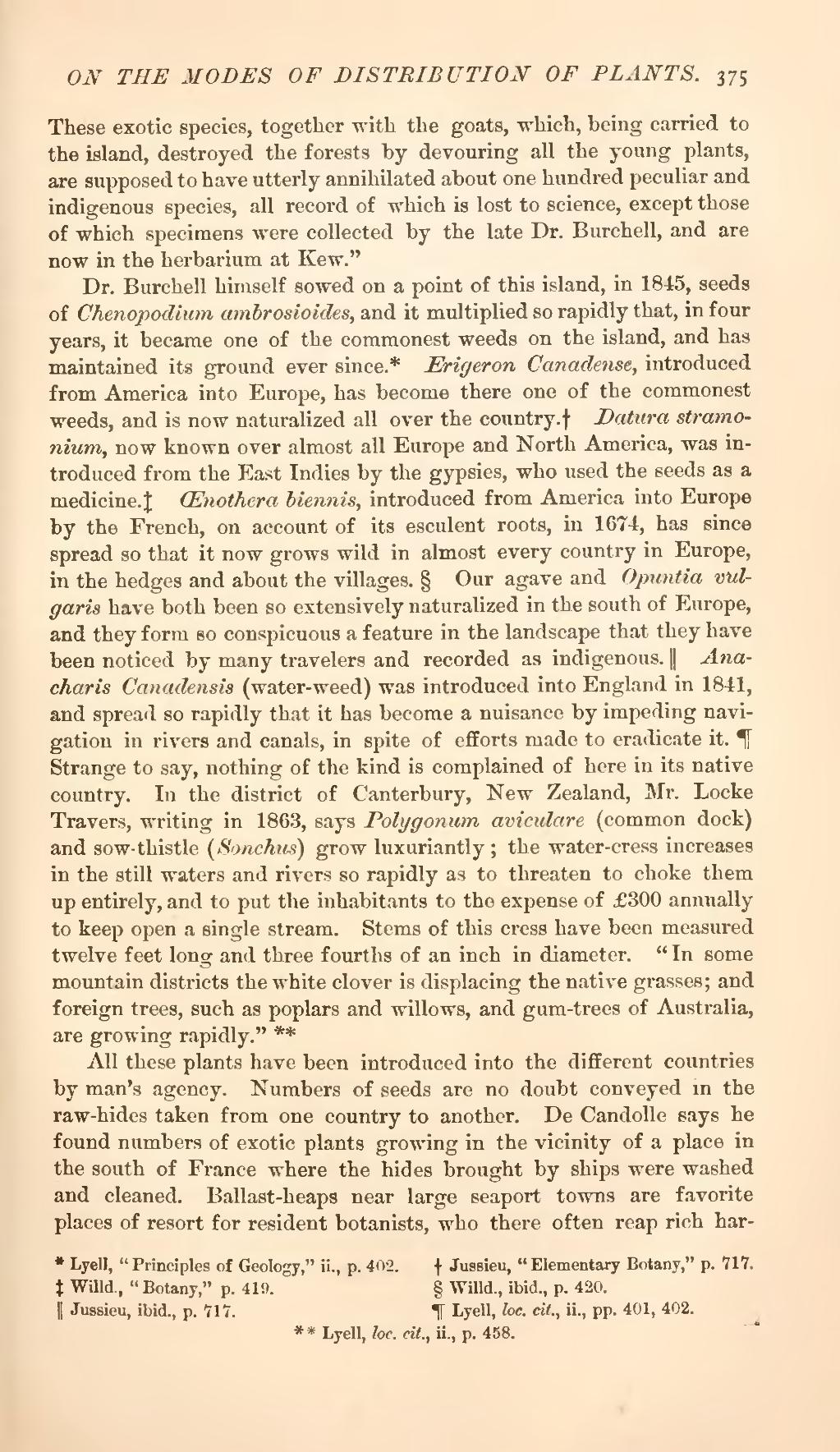These exotic species, together with the goats, which, being carried to the island, destroyed the forests by devouring all the young plants, are supposed to have utterly annihilated about one hundred peculiar and indigenous species, all record of which is lost to science, except those of which specimens were collected by the late Dr. Burchell, and are now in the herbarium at Kew."
Dr. Burchell himself sowed on a point of this island, in 1845, seeds of Chenopodium ambrosioides, and it multiplied so rapidly that, in four years, it became one of the commonest weeds on the island, and has maintained its ground ever since.[1] Erigeron Canadense, introduced from America into Europe, has become there one of the commonest weeds, and is now naturalized all over the country,[2] Datura stramonium, now known over almost all Europe and North America, was introduced from the East Indies by the gypsies, who used the seeds as a medicine.[3] Œnothera biennis, introduced from America into Europe by the French, on account of its esculent roots, in 1674, has since spread so that it now grows wild in almost every country in Europe, in the hedges and about the villages.[4] Our agave and Opuntia vulgaris have both been so extensively naturalized in the south of Europe, and they form so conspicuous a feature in the landscape that they have been noticed by many travelers and recorded as indigenous.[5] Anacharis Canadensis (water-weed) was introduced into England in 1841, and spread so rapidly that it has become a nuisance by impeding navigation in rivers and canals, in spite of efforts made to eradicate it.[6] Strange to say, nothing of the kind is complained of here in its native country. In the district of Canterbury, New Zealand, Mr. Locke Travers, writing in 1863, says Polygonum aviculare (common dock) and sow-thistle (Sonchus) grow luxuriantly; the water-cress increases in the still waters and rivers so rapidly as to threaten to choke them up entirely, and to put the inhabitants to the expense of £300 annually to keep open a single stream. Stems of this cress have been measured twelve feet long and three fourths of an inch in diameter. "In some mountain districts the white clover is displacing the native grasses; and foreign trees, such as poplars and willows, and gum-trees of Australia, are growing rapidly."[7]
All these plants have been introduced into the different countries by man's agency. Numbers of seeds are no doubt conveyed in the raw-hides taken from one country to another. De Candolle says he found numbers of exotic plants growing in the vicinity of a place in the south of France where the hides brought by ships were washed and cleaned. Ballast-heaps near large seaport towns are favorite places of resort for resident botanists, who there often reap rich har-
